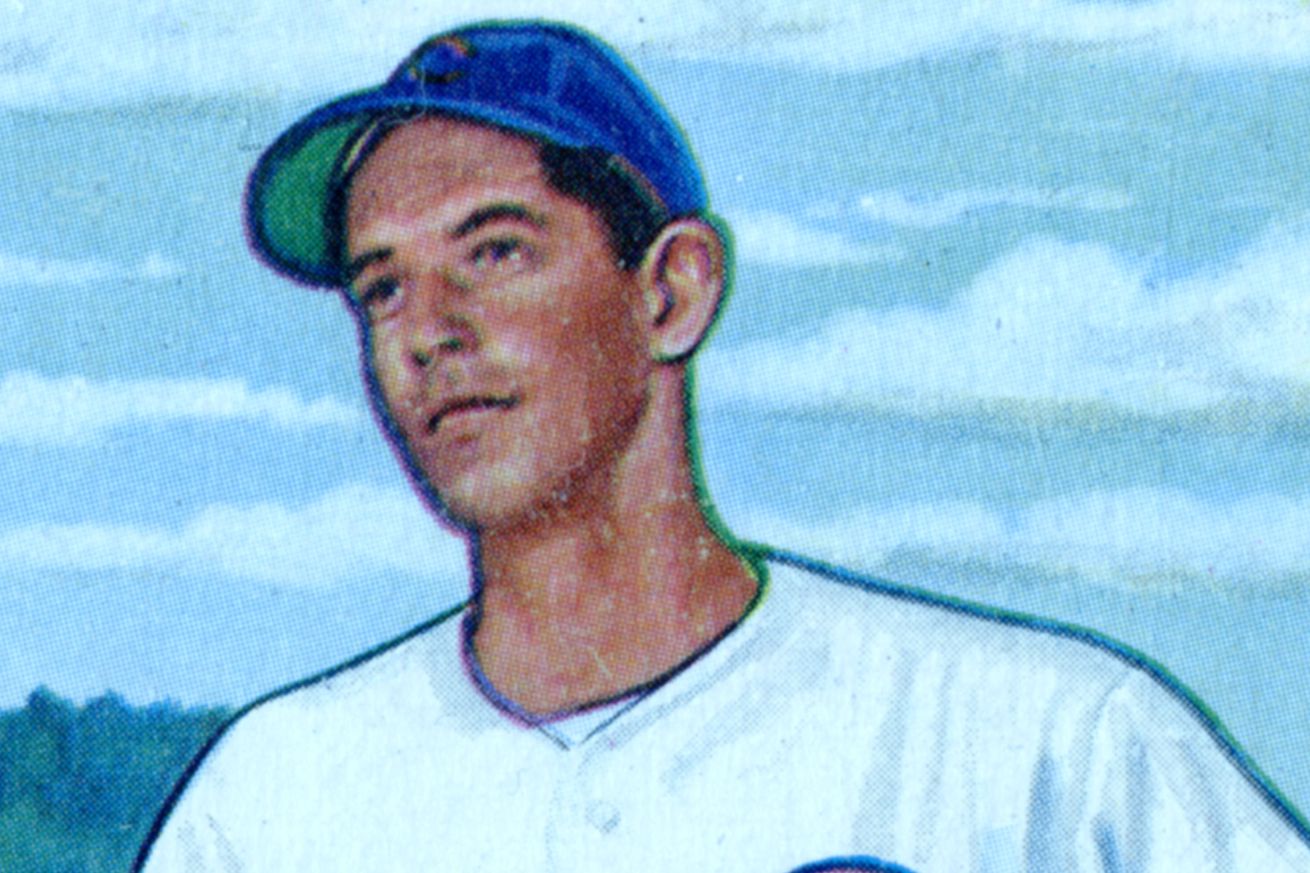
Another relatively quiet year for Cubs deals.
The 1953 Cubs were spared a 90-loss season because they won the final two games of the season to finish 65-89.
That didn’t seem to give GM Wid Matthews much impetus to improve the team. The ‘54 Cubs lost one more game and did have a 90-loss season, their fourth in a seven-year span.
None of the deals I’m about to tell you about moved the needle much for the Cubs, save one.
January 2: Acquired Buster Clarkson from Dallas (Texas League) for Edward Konick.
As we learned in the last article in this series, MLB teams could make deals like this with independent minor league clubs.
Konick never played in the majors.
Clarkson, a Negro League veteran, had pitched in a handful of games for the Braves in 1952, and was 38 at the time of the deal. He played three years in the Cubs minor leagues but never got a callup.
March 20: Acquired Dave Cole from the Braves for Roy Smalley
Smalley had been the Cubs’ regular shortstop for six years. A decent hitter, he made so many throwing errors that the Cubs’ double-play combination was once humorously dubbed “Miksis to Smalley to Addison Street.” He played little for the Braves and was shipped to the Phillies early in ‘55. He didn’t play much there either and retired after ‘58. He’s probably best known for his son, Roy Smalley Jr., who had a 13-year MLB career from 1975-87, mostly with the Twins.
Oh, yes. Dave Cole. He went 3-8 with a 5.36 ERA in 18 games (14 starts) in 1954 and was sent to the Phillies for cash considerations before the ‘55 season.
They might as well have not bothered.
June 14: Acquired Hal Rice from the Phillies for Luis Márquez
Márquez, an outfielder, went 1-for-12 with the Cubs before the trade, and 1-for-9 with the Phillies after, and never played in the majors again.
Rice, an outfielder, went 11-for-72 (.153), all singles, in 51 games for the Cubs after the trade, and never played in the majors again.
They might as well have not bothered.
September 30: Acquired Sam Jones and a PTBNL from the Indians for a PTBNL
This deal was a bit complicated. It was actually a cash transaction involving Ralph Kiner going to Cleveland, and wasn’t completed until mid-December, partly because at the time league waivers had to be obtained to send a player to the other league. Kiner’s SABR biography says:
The Cubs sold him to the Cleveland Indians after the season for a sum variously reported as $60,000 to $150,000. The deal involved several other players.
Baseball-reference.com says this figure was $60,000, roughly equivalent to $705,000 today. Kiner had been acquired from the Pirates in a massive deal in mid-1953 that also included somewhere between $100,000 (Chicago Tribune) and $150,000 (baseball-reference). We’ll cover that deal in the next installment.
The Cubs didn’t get “several other players” in this deal; the only other player besides Jones that came to the Cubs was outfielder Gale Wade, who batted .133/.220/.222 in 19 games for the Cubs in 1955 and 1956.
Kiner, who had been a home run machine for the Pirates prior to the Cubs’ acquiring him, hit well for the Cubs — .283/.394/.529 with 28 home runs in 117 games in ‘53, and .285/.371/.487 with another 22 home runs in 1954. But back issues dogged him and he had to retire after one year in Cleveland.
Jones, meanwhile, threw a no-hitter for the Cubs in May 1955 but walked an astonishing 185 batters in 241x innings. His two years for the Cubs in ‘55 and ‘56 were decent enough — a total of 5.0 bWAR — but then they traded him away after the ‘56 season. Jones went on to have some good years witht he Cardinals and Giants.
Another example of getting a good player, then trading him before he got better.
October 1: Acquired Jim Bolger, Harry Perkowski and Ted Tappe from the Redlegs for Johnny Klippstein and Jim Willis
Bolger, an outfielder, batted .244/.286/.322 with six home runs in 260 games in parts of three seasons for the Cubs, a total of -0.4 bWAR.
Perkowski posted a 5.29 ERA in 25 games for the Cubs in 1955 and never played in the majors again, a total of -0.5 bWAR.
Tappe, no relation to future Cubs College of Coaches member El Tappe, hit .260/.413/.540 with four home runs in 23 games for the Cubs in 1955, posting 0.6 bWAR and then… never played in the majors again.
So the Cubs got very little value here and… oh, no, here comes yet another guy who might have helped the Cubs. Klippstein, to be sure, had not pitched well in five Cubs seasons from 1950-54: 4.79 ERA in 193 games (87 starts), basically replacement value at 1.2 bWAR. But he was only 26, and…
Someone helped him figure it out. He threw reasonably well in Cincinnati, well enough to be traded to the Dodgers. He threw for them in the 1959 World Series, then led the NL in saves in 1960, pitched in the World Series for the Twins in 1965 and retired after 1967.
The Cubs could have used that — though, maybe they wouldn’t have had any idea how to bring out that talent. Klippstein posted 12.4 bWAR after leaving the Cubs. This was a very bad trade. (Jim Willis never played in the majors after 1954.)
All in all, this is another “D” grade year for Cubs trades.
